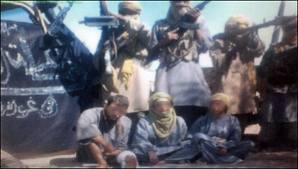More than 100 Africans protested on Tuesday outside a police station in China’s southern Guangdong province after an African man died in police custody.
The protest in Guangdong’s capital Guangzhou, which brought traffic to a halt, lasted for two hours on Tuesday, Xinhua reported, citing an official from the Guangzhou Municipal Public Security Bureau.
The dead African man, whose identity has not been confirmed, “suddenly fell unconscious” at a police station on Monday afternoon and “died after medical efforts failed”, according to police sources quoted by Xinhua.
The African man was taken into the police station for questioning on Monday after he had a “physical altercation” with another person, the owner of an electric bicycle who had given the African man a ride as a passenger on Monday afternoon. Both of them disagreed over payment.
The protest comes ahead of a summit between China and Africa that China is expected to host in July, and amid a crackdown by Beijing and Shanghai on “illegal foreigners”. In late May, Beijing launched a 100-day campaign to “clean out” foreigners living or working illegally in the city and has stepped up police checks on expatriates.
The Xinhua report said police have launched an investigation into the death and that “police in Guangzhou have called for foreigners to abide by Chinese law and refrain from disturbing public order”.
via Reuters.
Investors Could Get Rattled
By now most people watching the geopolitical world will know that Chinese investment (and thus immigration) is becoming a huge deal in Africa. But we hadn’t really been considering African immigration to China until today.
Images of the protest posted on Weibo paint a chaotic scene. This photo, posted by @ndgz via @城事风云榜, shows the scale of the protest:
 |
Another photo, posted by @onccnews seems to show migrants fighting with police officers:
 |
China is due to hold a summit for African nations in July, as Reuters notes, but the timing of that summit is beginning to look perilous, as anti-foreigner sentiment within the country grows. Shanghai recently began clamping down on illegal foreigners, while a prominent TV host recently warned on Weibo about the influx of immigrants in the country.
via Business Insider
Nigerian Immigrants Demanding A Consulate
Most of the demonstrators are thought to have come from the city’s various African communities and sources in the city said the dead man was Nigerian.
Guangzhou police said via its microblog account it had opened an investigation into the death of a foreign national on Monday. It said officers in Yuexiu district had been called because of a fight between a foreigner and an electric bicycle driver over a fare dispute.
In a separate post, the police said foreigners had blocked traffic on Guangyuan West Road – where the fight broke out – on Tuesday afternoon but were dispersed by officers.
They appealed to expatriates living in China to “abide by Chinese laws, not harm public interests or disrupt public order” and said police would investigate the death in strict accordance with the law.
One picture posted on Sina’s Weibo microblog showed a man carrying a cardboard placard reading “Give us the dead body” in English and Chinese.
Protests by foreign nationals residing in the country are rare in China. More than 100 demonstrators surrounded a police station in Guangzhou in 2009 after a Nigerian man died during an immigration raid. Reports said he had jumped from a second-floor window as police mounted surprise passport checks.
Nigerians in the city recently called for a consulate to be set up there, saying it would help them deal with immigration issues and tackle harassment.
via Guardian
Related articles
- In Southern China, A Thriving African Neighborhood (wnyc.org)
- Elderly Man Beaten to Death by Chinese Police (theepochtimes.com)
- You: Mood darkens among foreigners (edition.cnn.com)
- Urgent Appeal for Credible Investigation into the Truth of Li Wangyang(李旺阳)’s Death (globalfree.wordpress.com)
- Exclusive: Briton killed after threat to expose Chinese leader’s wife (news.yahoo.com)
- Political Rumors Spur Online Crackdown in China (globalspin.blogs.time.com)
- Wife of British businessman who died in China ‘is gagged by authorities’ (independent.co.uk)










